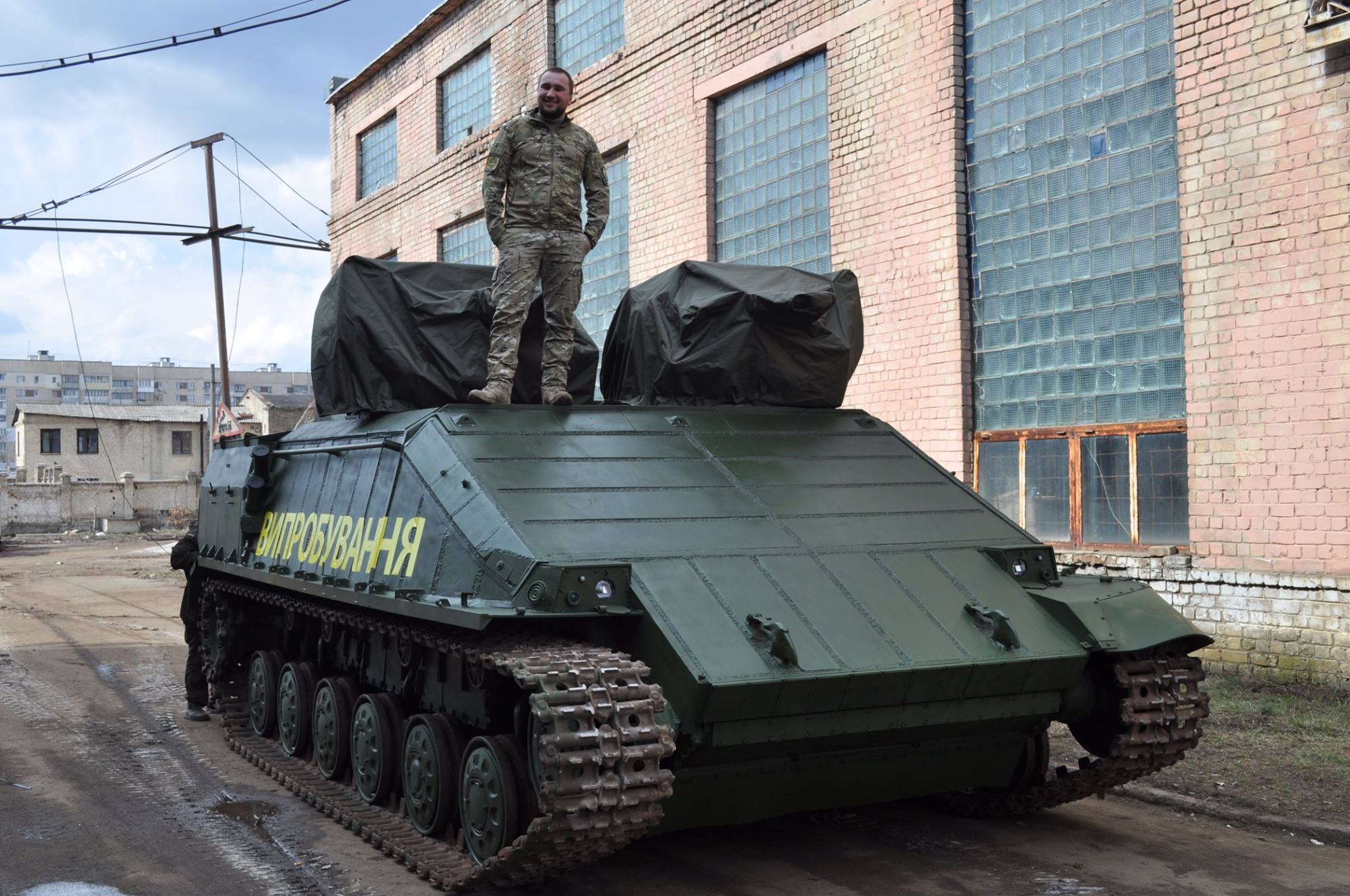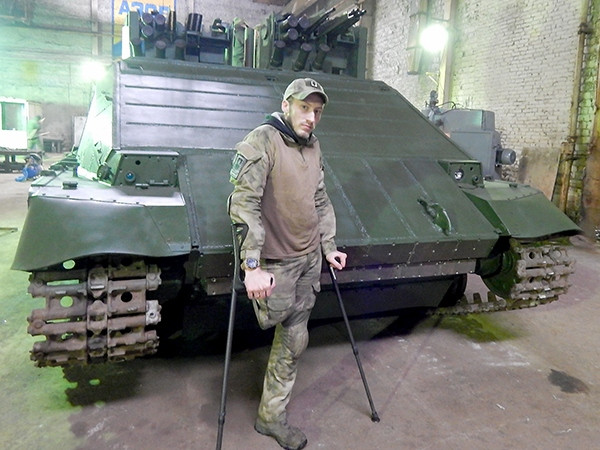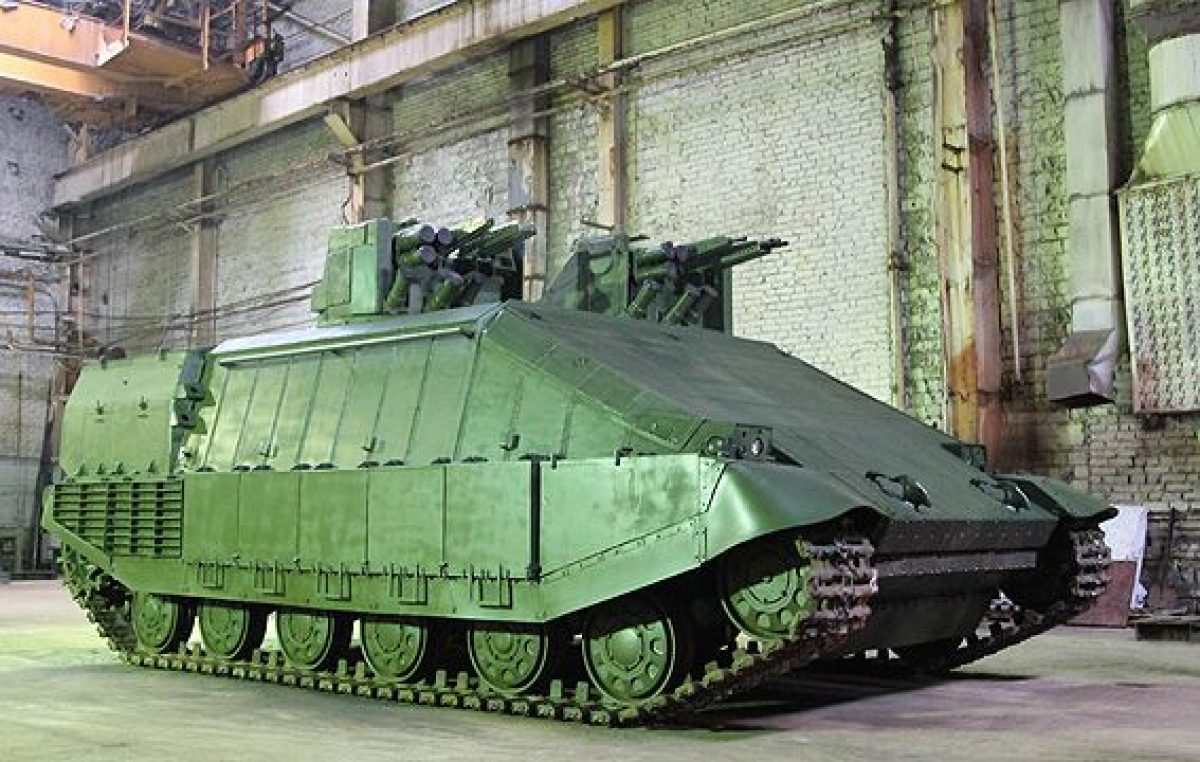Technological Innovations
As mentioned earlier, “Azov”, like other volunteer units, consistently felt a shortage of state support, especially concerning military vehicles and weapons. This prompted the development of their own engineering solutions to enhance personnel protection and firepower. These improvised prototypes were crafted by the military themselves, sometimes with the help of volunteers.
“Pryanik” (sometimes “Zalizyaka”)
One of the first symbols of “Azov” is the famous “armored vehicle”, the first known example of volunteer improvisation regarding armored vehicles. Essentially, it was an armored Kamaz truck, fitted with iron plates and rebar. The driver’s cabin was covered with armored plates, leaving a thin slit for the driver’s view. The tires were also armored. The rear side was fortified with springs, and a machine gun mount was installed in the cargo area. When needed, the plates on hinges could be lowered, allowing the vehicle to move on roads. The first known use of “Pryanik” was during the operation to liberate Mariupol on June 13, 2014. Notably, the suppression of pro-Russian terrorist positions with the machine gun mounted on “Pryanik” marked the beginning of clearing fortified areas. Later on, “Pryanik” participated in all battles of the summer campaign in which “Azov” took part.
MT-LB Modernization
Another forced improvisation to improve technical characteristics involved the modification of standard MT-LB tractors. Gridded anti-cumulative screens were installed not only on the front of the hull and along the sides but also around the turret’s perimeter. Besides enhanced protection and additional armor on the rear doors of the assault compartment, the ability to remotely control the ZU-23-2 was developed. Moreover, control could be done from a remote control or from the assault compartment turret. This vehicle also featured a turret (likely from the BTR-70 or BRDM-2) with KPV and PKT machine guns.
Tank “Azovec”
The armored infantry support vehicle “Azovec” was presented to the public by the engineering bureau of the National Guard’s Azov Regiment and the Azov Engineering Group in 2016. It is a two-turret tank designed for urban combat. The development was evaluated by military leadership, including the then-Minister of Defense Stepan Poltorak. The chief designer Mykola Stepanov, a former chief engineer and technical director of the Malyshev Tank Plant in Kharkiv, who previously put tanks like “Oplot” into serial production and had worked in tank building for half a century, led the project. The new design was created based on a deep modernization of the T-64, with GS-23 guns on the turrets, Stugna and Korsar ATGMs, and PKT machine guns.
Military analysts commented that the crew’s protection in the tank is unprecedented, with the crew placed in an armored capsule protected by four levels of armor, making it practically inaccessible to modern anti-tank ammunition. Subsequently, a group of engineers worked separately from “Azov” on other military developments in collaboration with the State Concern “Ukroboronprom” for the Ministry of Defense. Among these projects was the creation of a new tank called “Tyrex.” Information about these developments remains classified.
Buggy
The buggy is a lightweight off-road vehicle designed for high mobility on rough terrain. This prototype was developed by volunteers, military personnel, and veterans of the Azov Regiment and was presented in 2019. While buggies have long been used for military purposes, this off-road vehicle was adapted specifically for local combat operations and a wide range of tasks, including patrolling, reconnaissance, casualty evacuation, fire correction, and other combat missions in hard-to-reach positions that require high mobility. The vehicle can reach speeds of up to 110 km/h, and on the road, it can go up to 145 km/h, with a range of 500 km. Another advantage of the buggy is its low production cost and the ability to equip it with various types of weaponry, from small arms to anti-tank missile systems. It is known that the vehicle underwent testing on the proving ground, including trials considering different weather conditions. Work was also done on creating a digital stabilization and fire control module. The development was presented by former Azov Regiment platoon commander Sergiy Yakymchuk. The buggy received high praise from military engineer Oleksandr Hordiiev, the deputy general director of the Mayak Plant, but it is currently unknown whether it has entered serial production.


